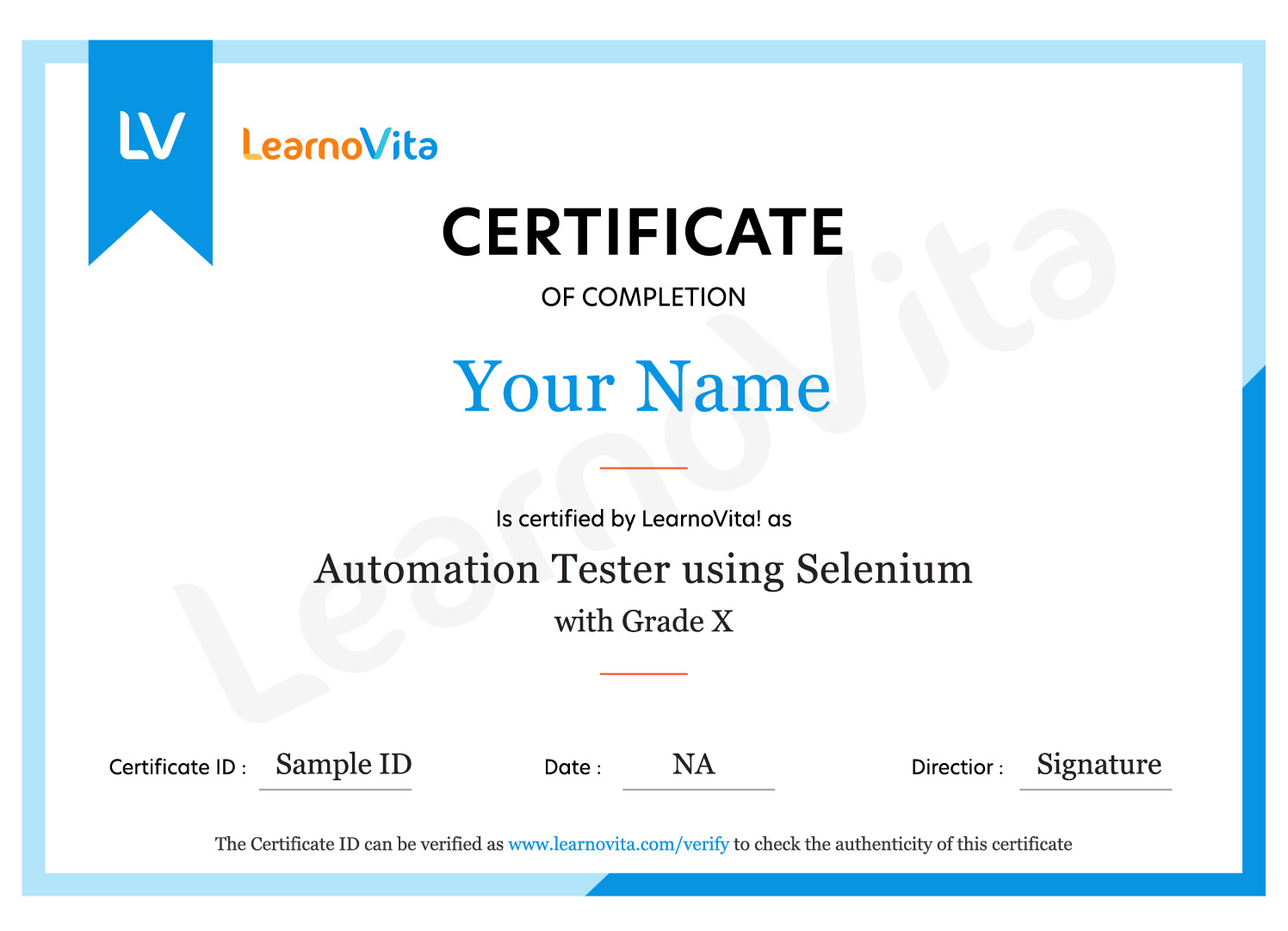What You'll Learn
Spanish Language Course in Coimbatore provide comprehensive learning in reading, writing, listening and speaking for daily and professional use.
Learn Spanish grammar, sentence structure and vocabulary for fluent communication in the Spanish Language Training program.
Develop conversational skills, listening comprehension and pronunciation with interactive Spanish Language Projects.
Gain hands-on experience in translation, formal writing and communication practice at Spanish Language training in Coimbatore.
Explore advanced topics including idioms, expressions and cultural nuances using Spanish Language Course Materials.
Earn a professional Spanish Certification Course in Coimbatore to enhance career prospects and global opportunities.
Spanish Language Course Objectives
- Opportunities in international business and trade
- Careers in tourism, travel and hospitality
- Roles in translation and interpretation services
- Employment in multinational companies and global NGOs
- Teaching and academic research positions
- Spanish Alphabets and Pronunciation
- Basic Grammar and Sentence Formation
- Vocabulary Building for Daily Use
- Conversational Spanish Practice
- Writing Skills and Comprehension
- Travel and Tourism
- Hospitality and Airlines
- International Business and Trade
- Translation and Localization Services
- Education and Language Institutes
- Improved communication in Spanish-speaking regions
- Enhanced global career opportunities
- Better cultural awareness and understanding
- Ability to work in international companies
- Strengthened resume and professional profile
Request more informations
Phone (For Voice Call):
+91 89258 75257
WhatsApp (For Call & Chat):
+91 89258 75257
Spanish Language Course Benefits
The Spanish Language Course in Coimbatore provide practical experience in speaking, reading, writing and listening. Learners engage in Spanish Language Projects and internships to refine skills under expert guidance. Advanced modules include business Spanish, translation and conversation practice. This Spanish Language Course with Placement equips learners for roles in global companies, BPOs, tourism and educational sectors.
- Designation
-
Annual SalaryHiring Companies
About Spanish Language Certification Training
Our Spanish Certification Course in Coimbatore delivers complete training in reading, writing, listening and speaking Spanish. Students gain hands-on exposure through Spanish Projects and interactive exercises. With Spanish Language Internship in Coimbatore, learners strengthen their portfolio and career opportunities. 100% placement assistance ensures excellent prospects in multinational companies, BPOs and educational institutions.
Top Skills You Will Gain
- Grammar Mastery
- Vocabulary Enhancement
- Pronunciation & Accent
- Conversational Fluency
- Writing Skills
- Listening Comprehension
- Translation Techniques
- Business Spanish
12+ Spanish Language Tools
Online Classroom Batches Preferred
No Interest Financing start at ₹ 5000 / month
Corporate Training
- Customized Learning
- Enterprise Grade Learning Management System (LMS)
- 24x7 Support
- Enterprise Grade Reporting
Why Spanish Language Course From Learnovita? 100% Money Back Guarantee
Spanish Language Course Curriculam
Trainers Profile
Our Spanish Language Course in Coimbatore are led by expert language trainers specializing in grammar, pronunciation, conversation and cultural context. Trainers provide hands-on guidance and interactive sessions. Learners receive comprehensive Spanish Language Course Materials to support practice. Live project mentorship ensures practical learning. Trainers prepare students for professional and global career opportunities in Spanish language proficiency.
Syllabus for Spanish Language Training Download syllabus
- Overview of Spanish language
- Alphabets and pronunciation
- Basic greetings and phrases
- Introduction to nouns and articles
- Sentence structure basics
- Verbs and tenses
- Adjectives and adverbs
- Pronouns and prepositions
- Simple sentence formation
- Question formation
- Common words and phrases
- Numbers, dates and time
- Daily life vocabulary
- Travel & tourism vocabulary
- Workplace vocabulary
- Understanding spoken Spanish
- Listening exercises with audio clips
- Dictation practice
- Conversational practice
- Identifying key points
- Improving comprehension
- Pronunciation techniques
- Accent improvement
- Role-play exercises
- Dialogues in various contexts
- Group conversation practice
- Basic sentence writing
- Paragraph construction
- Emails and formal letters
- Creative writing exercises
- Storytelling techniques
- Professional communication
- Presentation skills in Spanish
- Business correspondence
- Meeting & negotiation phrases
- Industry-specific vocabulary
- Project-based practice
- Spanish traditions & festivals
- Social etiquette
- Business culture
- Regional dialects
- Practical cultural exercises
- Integration with language learning
- Idioms and expressions
- Advanced grammar structures
- Complex sentence formation
- Interpretation & translation
- Formal vs informal communication
- Project-based assignments
- Translation projects
- Conversational scenarios
- Business correspondence practice
- Report & email writing
- Portfolio compilation
- Project presentation
Request more informations
Phone (For Voice Call):
+91 89258 75257
WhatsApp (For Call & Chat):
+91 89258 75257
Industry Projects
Career Support
Our Hiring Partner
Request more informations
Phone (For Voice Call):
+91 89258 75257
WhatsApp (For Call & Chat):
+91 89258 75257
Exam & Spanish Language Certification
- Basic understanding of the Spanish alphabet and pronunciation
- Familiarity with simple Spanish vocabulary and phrases
- Interest in learning conversational and professional Spanish
- Commitment to practice speaking, reading and writing
- Translator or Interpreter
- Customer Support Executive (Spanish-speaking clients)
- International Sales or Business Development Associate
- Tour Guide or Travel Consultant
- Content Writer or Editor (Spanish language focus)

Our Student Successful Story
How are the Spanish Language with LearnoVita Different?
Feature
LearnoVita
Other Institutes
Affordable Fees
Competitive Pricing With Flexible Payment Options.
Higher Spanish Language Fees With Limited Payment Options.
Live Class From ( Industry Expert)
Well Experienced Trainer From a Relevant Field With Practical Spanish Language Training
Theoretical Class With Limited Practical
Updated Syllabus
Updated and Industry-relevant Spanish Language Curriculum With Hands-on Learning.
Outdated Curriculum With Limited Practical Training.
Hands-on projects
Real-world Spanish Language Project With Live Case Studies and Collaboration With Companies.
Basic Projects With Limited Real-world Application.
Certification
Industry-recognized Spanish Language Certifications With Global Validity.
Basic Spanish Language Certifications With Limited Recognition.
Placement Support
Strong Placement Support With Tie-ups With Top Companies and Mock Interviews.
Basic Placement Support
Industry Partnerships
Strong Ties With Top Tech Companies for Internships and Placements
No Partnerships, Limited Opportunities
Batch Size
Small Batch Sizes for Personalized Attention.
Large Batch Sizes With Limited Individual Focus.
Additional Features
Lifetime Access to Spanish Language Materials, Alumni Network, and Hackathons.
No Additional Features or Perks.
Training Support
Dedicated Mentors, 24/7 Doubt Resolution, and Personalized Guidance.
Limited Mentor Support and No After-hours Assistance.
Spanish Language Course FAQ's
- LearnoVita is dedicated to assisting job seekers in seeking, connecting, and achieving success, while also ensuring employers are delighted with the ideal candidates.
- Upon successful completion of a career course with LearnoVita, you may qualify for job placement assistance. We offer 100% placement assistance and maintain strong relationships with over 650 top MNCs.
- Our Placement Cell aids students in securing interviews with major companies such as Oracle, HP, Wipro, Accenture, Google, IBM, Tech Mahindra, Amazon, CTS, TCS, Sports One , Infosys, MindTree, and MPhasis, among others.
- LearnoVita has a legendary reputation for placing students, as evidenced by our Placed Students' List on our website. Last year alone, over 5400 students were placed in India and globally.
- We conduct development sessions, including mock interviews and presentation skills training, to prepare students for challenging interview situations with confidence. With an 85% placement record, our Placement Cell continues to support you until you secure a position with a better MNC.
- Please visit your student's portal for free access to job openings, study materials, videos, recorded sections, and top MNC interview questions.

- Build a Powerful Resume for Career Success
- Get Trainer Tips to Clear Interviews
- Practice with Experts: Mock Interviews for Success
- Crack Interviews & Land Your Dream Job
Get Our App Now!

















 Regular 1:1 Mentorship From Industry Experts
Regular 1:1 Mentorship From Industry Experts




